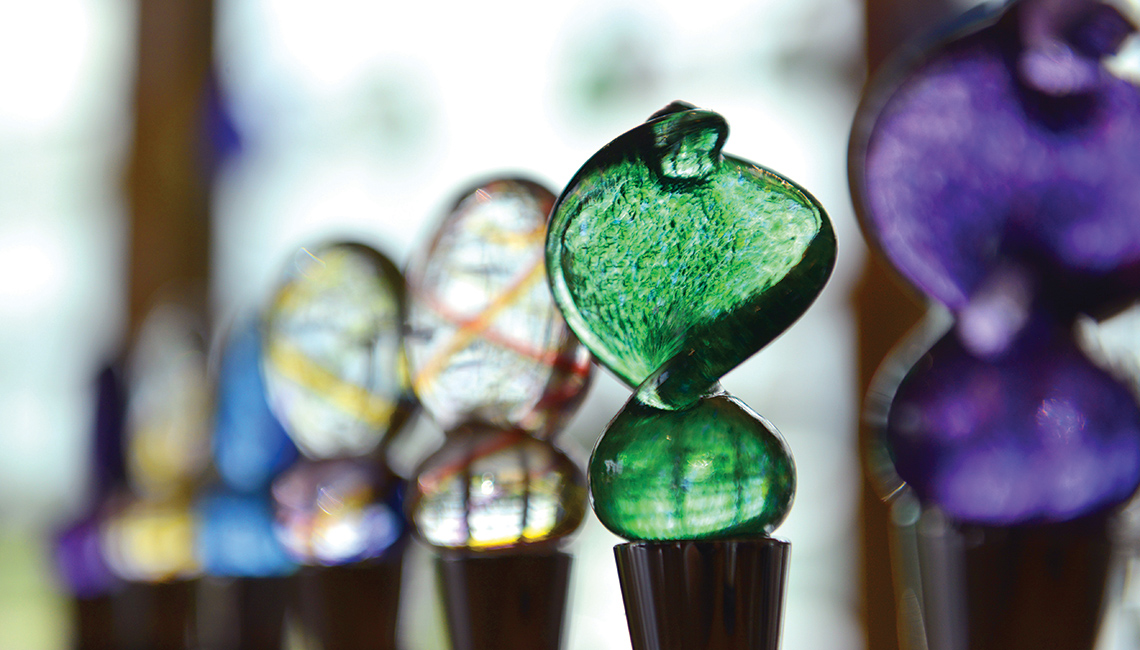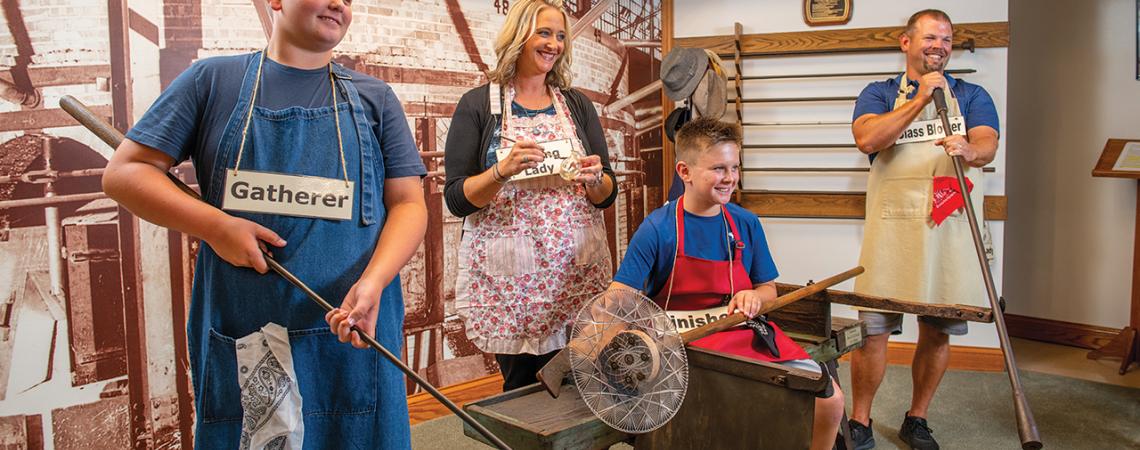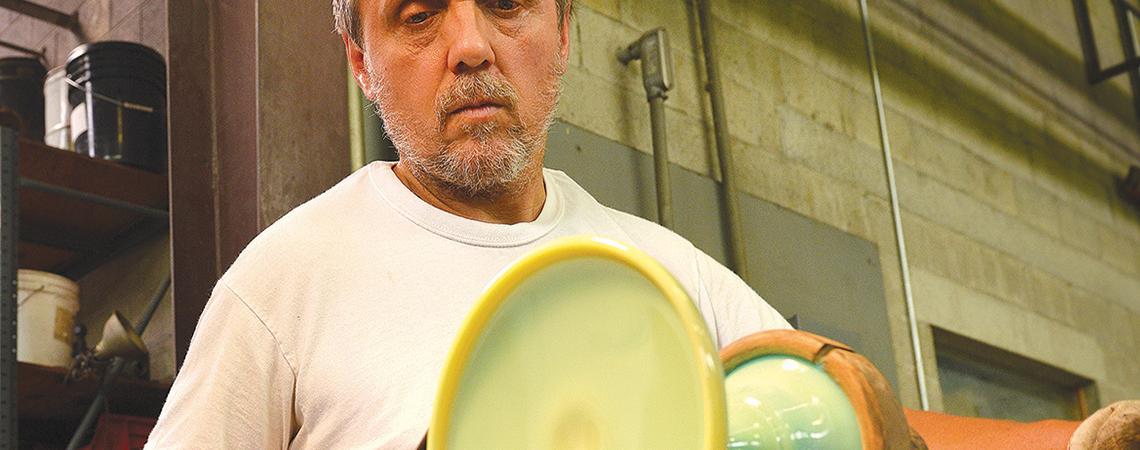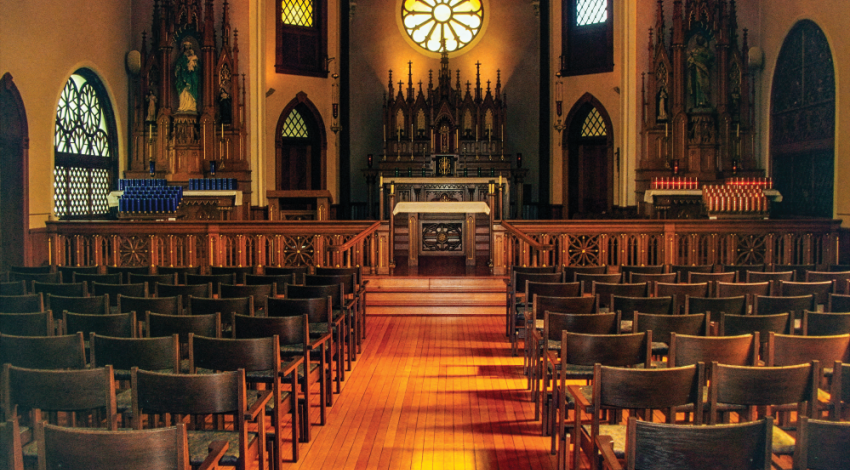Cindy Arent adjusts her white gloves and smooths the front of her apron over her 19th-century dress. Arent, a former schoolteacher and now museum director of the National Museum of Cambridge Glass in Cambridge, channels her inner educator to preserve the history of one of the country’s most successful glassware manufacturers, whose sales reached around the world.
Her enthusiasm is palpable as she greets visitors to the museum. “Are you ready?” she asks a tour group. After an enthusiastic “Yes!” she’s off — and thus begins a delightful day trip dedicated to glass production around southeastern Ohio.
The National Museum of Cambridge Glass
National Museum of Cambridge Glass
The coal seams and sandstone deposits layered within the hills of eastern Ohio provided the perfect environment for the glassmaking industry to take root and flourish. The Cambridge Glass Company began operations in 1902, producing glassware until the plant closed in 1958. In 1982, the first museum of Cambridge Glass opened, brought to life by the sustained effort of an Ohio nonprofit group called the National Cambridge Collectors.
Today, the museum offers a hands-on, interactive experience in the history of glassmaking: Visitors can create rubbings from etching plates that were used for glass production as well as handle the equipment and molds. The guided tours provide back stories on more than 8,000 glassware pieces. One full section is devoted to Hollywood’s use of the glassware in series such as The Good Place and Empire. Don’t miss the 1940s film produced by the company that follows the creation of glass dinnerware pieces from initial design to final product during a time before computer-aided design and mass automated production.
Mosser Glass
After Cambridge Glass closed, Thomas Mosser, whose father had been the Cambridge plant manager, decided to build a company of his own. He started producing what later became Mosser Glass in a chicken coop in his backyard.
Today, Mosser Glass — still family owned — produces about 200,000 pieces annually, blending modern efficiency with traditional craftsmanship to create glassware that’s been featured on the Science Channel, in one of Katy Perry’s music videos, and at the White House.
During a guided factory tour, visitors can get an up-close view of the artisans creating pressed-glass pieces. Mosser’s on-site retail store showcases a selection of products, including items for everyday use and whimsical holiday pieces. While the glassware has been around for decades, it appears to be catching the eye of a new generation. “Millennials have become very interested in pretty much all of the opaque glass colors,” says Mindy Mosser. “They’ve also helped fuel the trend of tableware instead of the historic collectible trend.”
Ohio Glass Museum and Glass Blowing Studio
Fairfield County has been home to numerous glass companies over the years, thanks to abundant supplies of sandstone and natural gas — for a time, businesses were given free natural gas as enticement to locate there. The first glass manufacturer began production in 1888, though perhaps the most successful one, the Hocking Glass Company (now Anchor Hocking), didn’t come along until 1905.
The Ohio Glass Museum and Glass Blowing Studio celebrates the importance of glassware making in the region and beyond. Visitors wind through displays ranging from art to industrial to consumer products. A comprehensive 15-minute movie gives an overview of the history of local glass companies, including the still-operating Anchor Hocking. A gift shop, classes, and a chance to view an artisan blowing glass top off the visitor experience.











